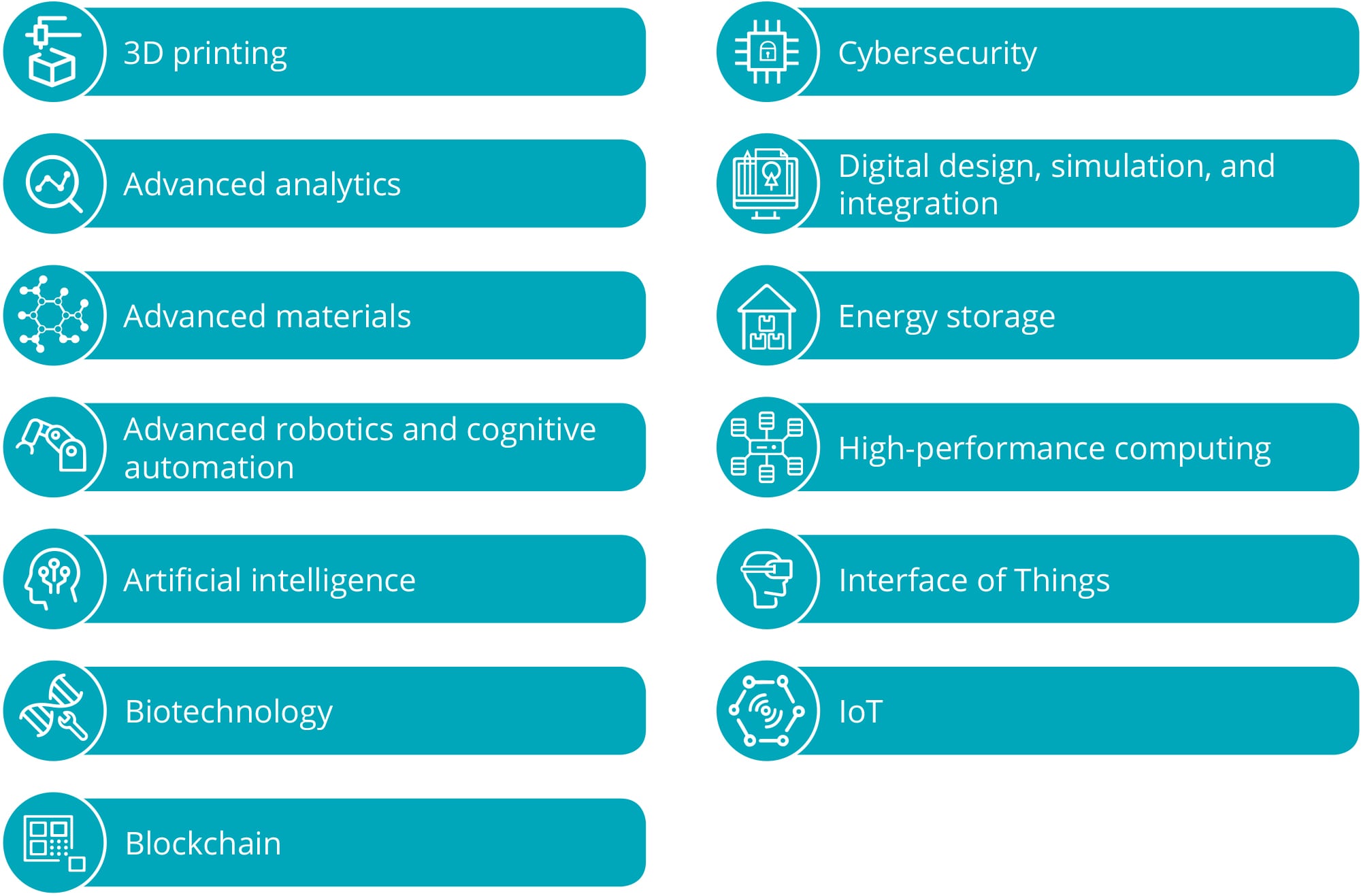
Tracing innovation through exponential technologies Lessons from the US industrial patent data
4 minute read
09 July 2019
A keen understanding of innovation and a well-orchestrated interplay of exponential technologies can create frontrunners in industrial manufacturing innovation.
Innovation and exponential technologies
Innovation is a multifaceted topic, and a versatile one at that. Larry Keeley, an innovation strategist at Deloitte Doblin, defines innovation simply as “the creation of a viable new offering.”1 It can mean many things—it can be directed toward meeting a customer need; it should sustain itself and return value to the company; it is new to a market or industry; and it should extend beyond products to ways of doing business and even new forms of engagement with customers. That being said, it takes a nuanced approach to understand what innovation—with all its complexities—exactly means in the industrial manufacturing industry.
Learn more
View the Innovation in industrial manufacturing collection
Subscribe to receive related content
Download the Deloitte Insights and Dow Jones app
In the Fourth Industrial Revolution, innovation is steeped in technology, and advanced technology is the underpinning of the digital enterprise. The ability to understand the importance of technology and build a strategy that leverages advanced technologies is a hallmark of leading manufacturers.2 In fact, to stay ahead of the digital maturity curve, manufacturers should move beyond point innovations, focusing instead on multiple areas and implementing technologies together. In a Deloitte study, Exponential technologies in manufacturing: Technology, talent, and innovation transformation in manufacturing, 13 technologies from advanced robotics to the Internet of Things (IoT) emerged as tools for industrial manufacturing that accelerate the pace of transformation to digital enterprises.3 We call them exponential technologies4. They are:

A view of industrial innovation through the US patent universe
While the connection between innovation and industrial manufacturing is long established, that between innovation and exponential technologies needed probing. To this end, Deloitte scanned filings and citations at the US Patent and Trademark Office for a representative group of 43 Fortune 100 industrial companies. We reviewed data collected over a 12-year period (2006–2018) to identify patterns and linkages of the exponential technologies.
Our analysis for industrial manufacturers seems to reveal some key insights for executives at industrial manufacturing companies, including:
- Patents related to exponential technologies have consistently represented the majority share of overall patents filed during 2006–2018, and especially since 2016.5
- Industrial companies are frequently combining two or more exponential technologies through their patented innovations, and IoT-related patents are often at the nexus.
- There could be a “sweet spot” for research and development (R&D) investment that yields the greatest intensity of patent-related innovation for industrial companies.
Additionally, we funneled it and our findings in an interactive figure that you can explore for insights for your industry and specific exponential technologies.
The analysis for industrials revealed additional insights around how companies are investing in R&D and the returns on their R&D investments. Learn more about this in “Spotlight on patent investments in industrial manufacturing.”6
Additionally, for a closer look at how the convergence of Moore’s Law and Industry 4.0 appear to be changing the pace of innovation in manufacturing, read “Pathways to faster innovation in industrial manufacturing.”7 This article identifies how certain industrial companies are using combinations of exponential technologies to drive faster innovation across products and processes.
This study raises some important considerations for industrial manufacturing leaders to deliver results:
Evaluate the concentration of patent activity in your organization related to exponential technologies. Is it greater than 50 percent? The share of exponential technologies in the US patent space seems to be increasing for industrial companies (59 percent in 2018), signaling the continued adoption of digital to transform business.
Consider the split of patent-driven research that is focused toward product innovation versus process innovation. Our study showed an increasing gap between the patents related to process innovations and products (43 percent in 2018). Are you linking process innovations with product development? This is expected to be increasingly important as industrial companies advance along the digital maturity curve.
Explore how your company makes its R&D expenditure decisions. Our analysis revealed that companies flexible with R&D investment (i.e., those decoupling R&D investments from a standard percentage of revenue) registered almost three times as many patents between 2009 and 2017. How could your company consider a more nimble approach to research spending?
Innovation is a journey that has been well traveled by the industrial manufacturing industry. Our insights use the context of Deloitte’s exponential technologies in manufacturing to scan the US patent subspace for industrial manufacturers as another aperture through which to view the penetration, pace, and business impact of digital technologies on manufacturing.
Explore more
-
Innovation accelerators Article5 years ago
-
Cloud as innovation driver Article5 years ago
-
Special operations forces and great power competition Article5 years ago
-
Accelerating digital innovation inside and out Article5 years ago
-
What government can learn from venture capital Article5 years ago
-
What is work? Podcast5 years ago













